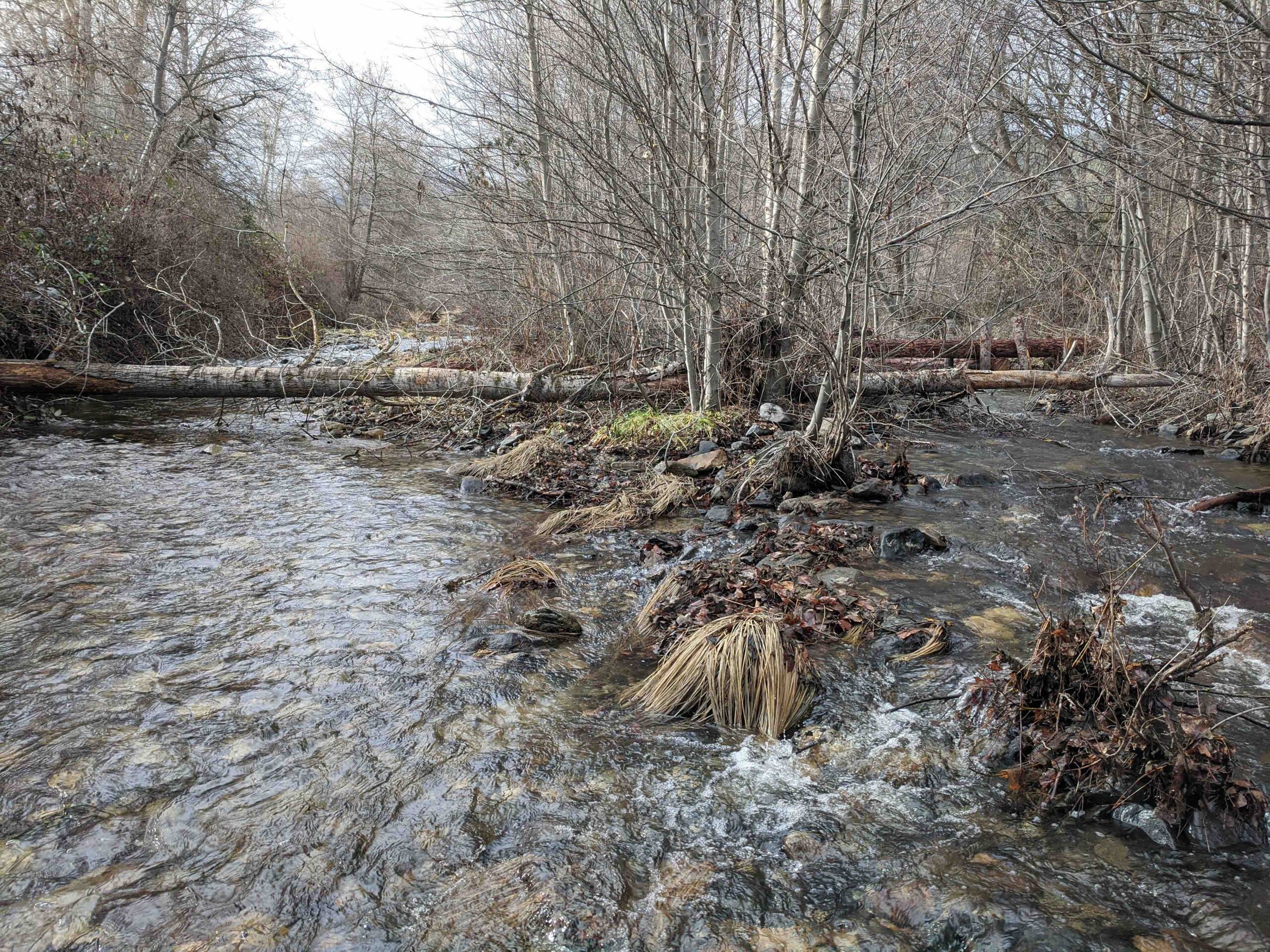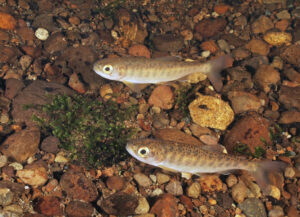
Photo: Betsy Stapleton/Scott River Watershed Council
In 2020, we’re celebrating the 5-year anniversary of the Habitat Restoration and Enhancement (HRE) Act by spotlighting all of the amazing habitat- and species-boosting work restorationists have done around California.

A pair of juvenile Coho salmon. Photo: Roger Tabor/U.S. Fish and Wildlife Service.
We recently checked in with Betsy Stapleton of Scott River Watershed Council (SRWC) for an update on the group’s restoration efforts, including their beaver dam analog restoration suite. Betsy reported back that in 2019, the group was able to revitalize another stretch of habitat for endangered Coho, Chinook, and steelhead salmon in Siskiyou County. Stapleton’s and SRWC’s restoration efforts have made a huge difference and each project is a tangible, exponential win not just for fish species, but for complex habitat and ecosystem resilience.
The project placed “large woody debris” in streams to slow high water flows and create deep, cold pools where salmon can rest during their long journeys to and from their upstream spawning grounds. The project also installed gravel to help salmon spawn further downstream, which helps our finned friends better adapt to climate change.
The HRE Act is essential for our efforts to recover Coho populations – we would not have gotten any of our projects on the ground without the Act, and it’s a great alternative to traditional permitting pathways that maintains all the strict environmental standards we need. – Betsy Stapleton, Scott River Watershed Council
The best news? Coho are already returning to the area to lay eggs, and juvenile fish have been spotted using the protective sanctuary established by the project. While reinvigorating habitat certainly offers long-term benefits, it’s also heartening in the short-term to see struggling species get an immediate boost from these critical efforts. Betsy and her team are true habitat stewards, and it’s exciting to track what they do both for their local watershed and as a model for sustained beneficial restoration in California.
